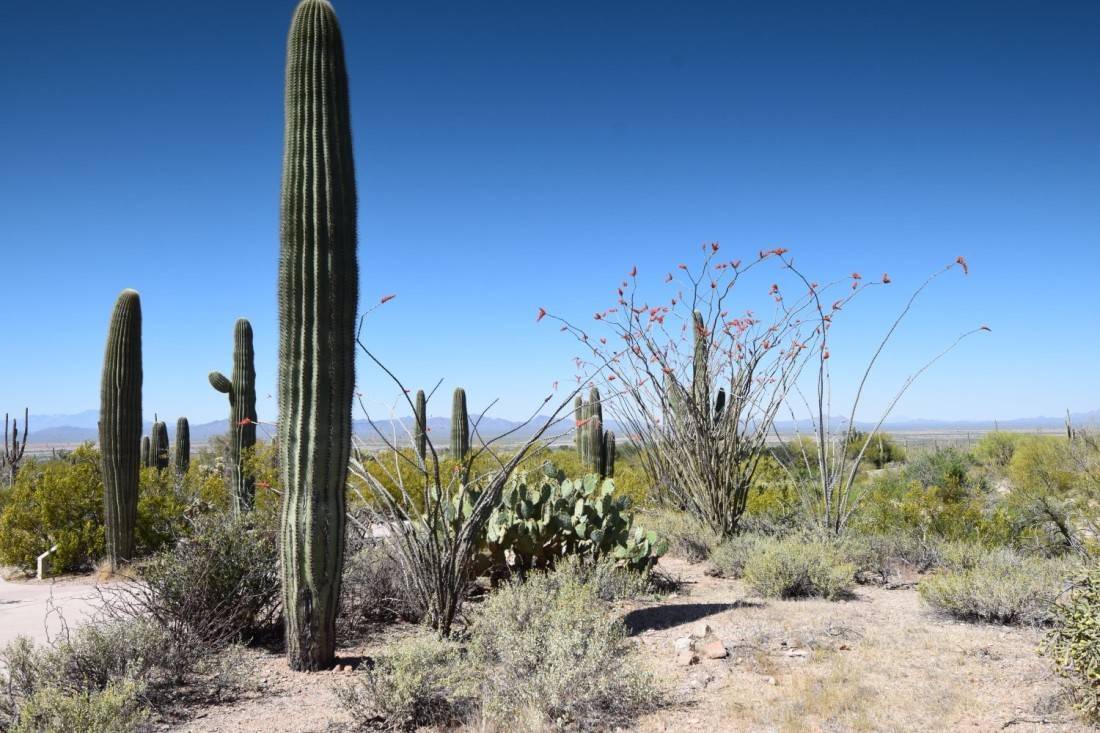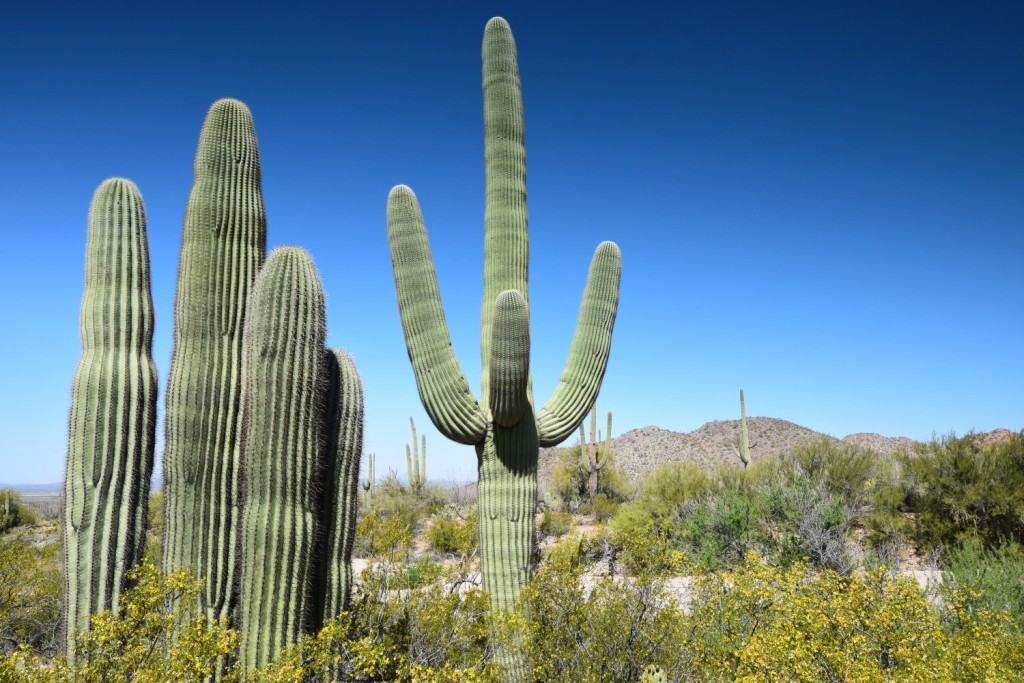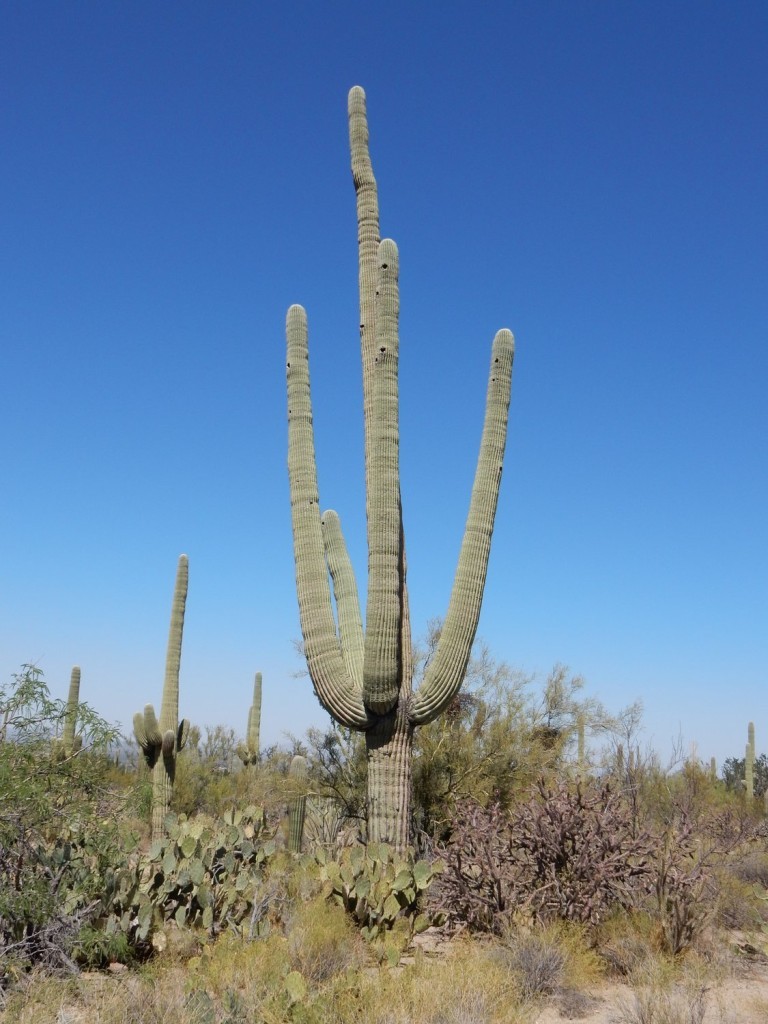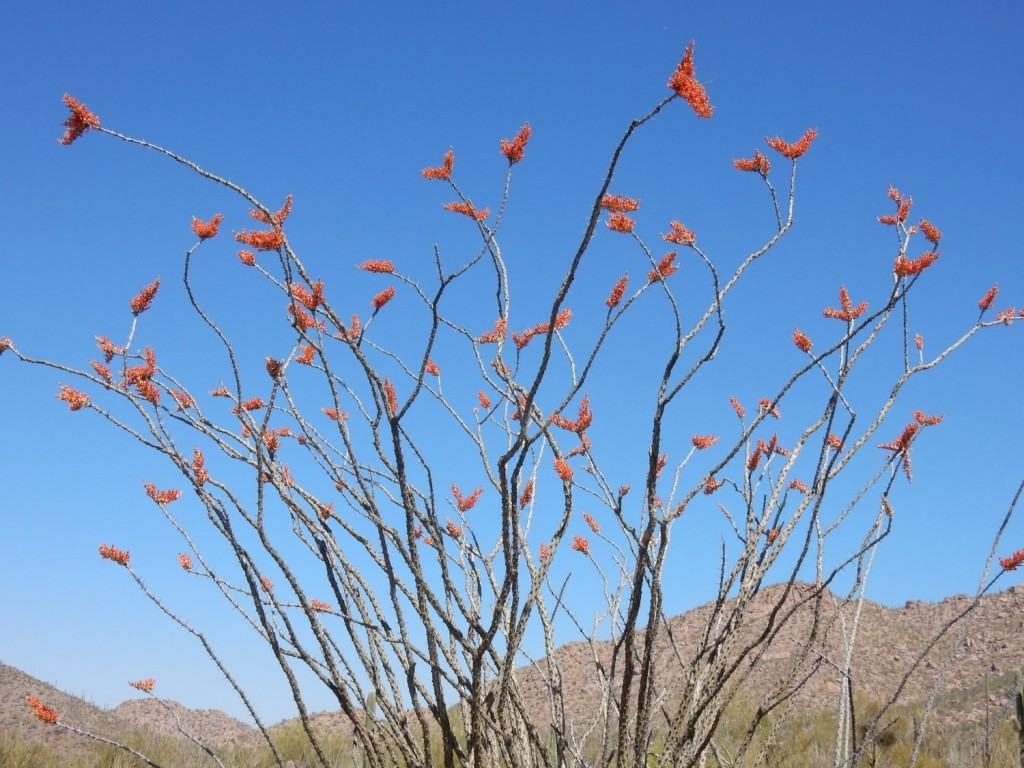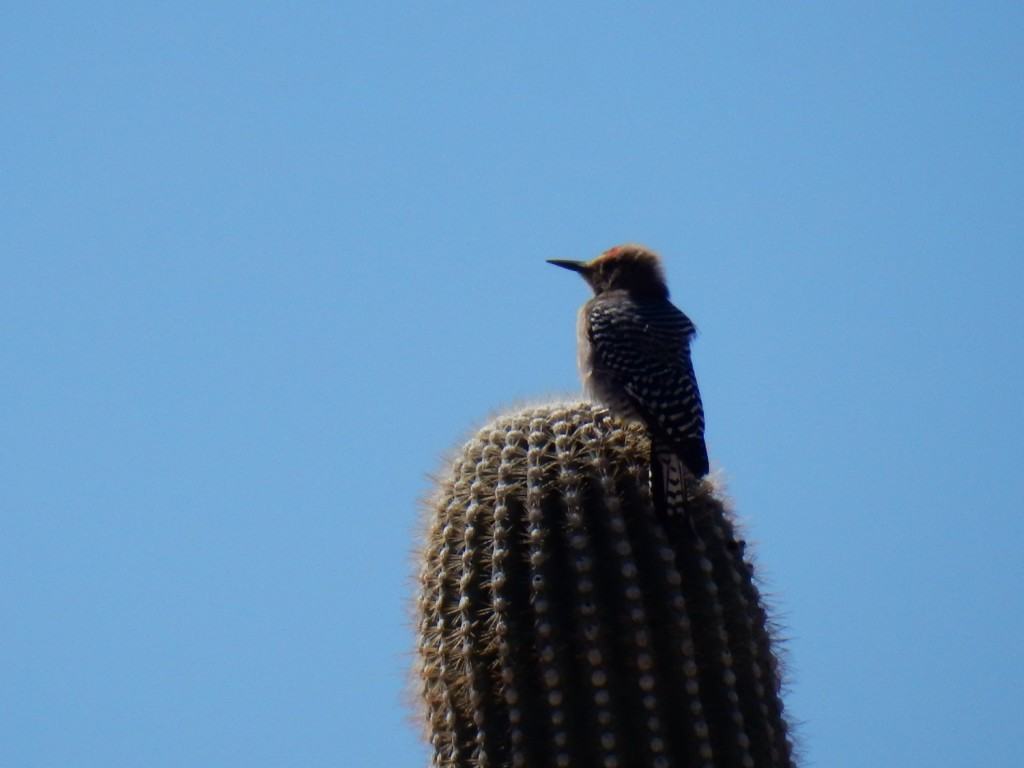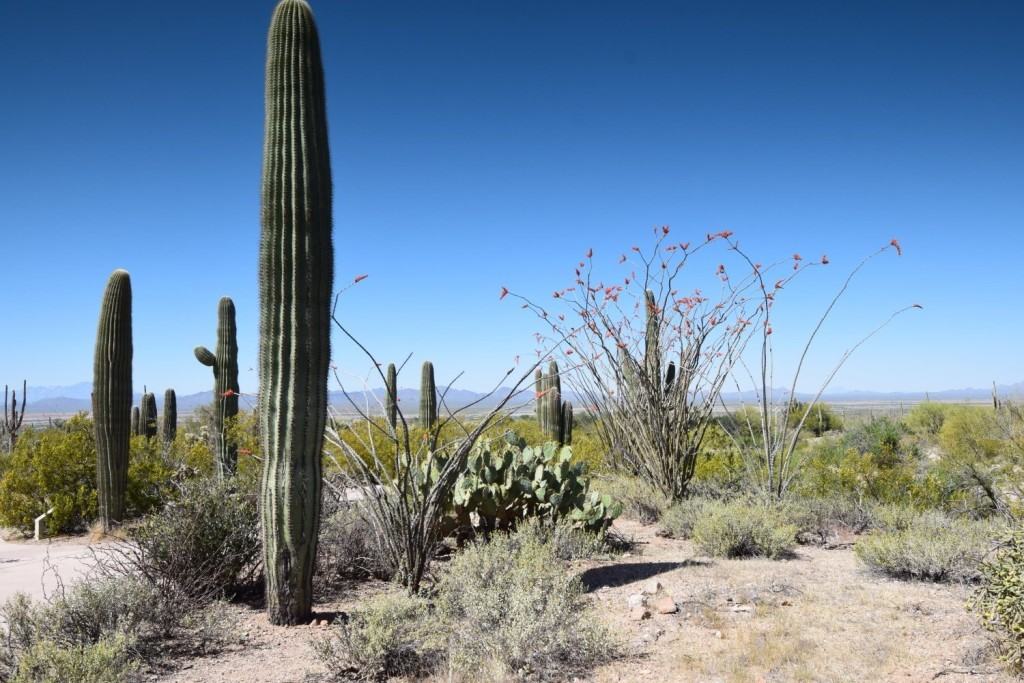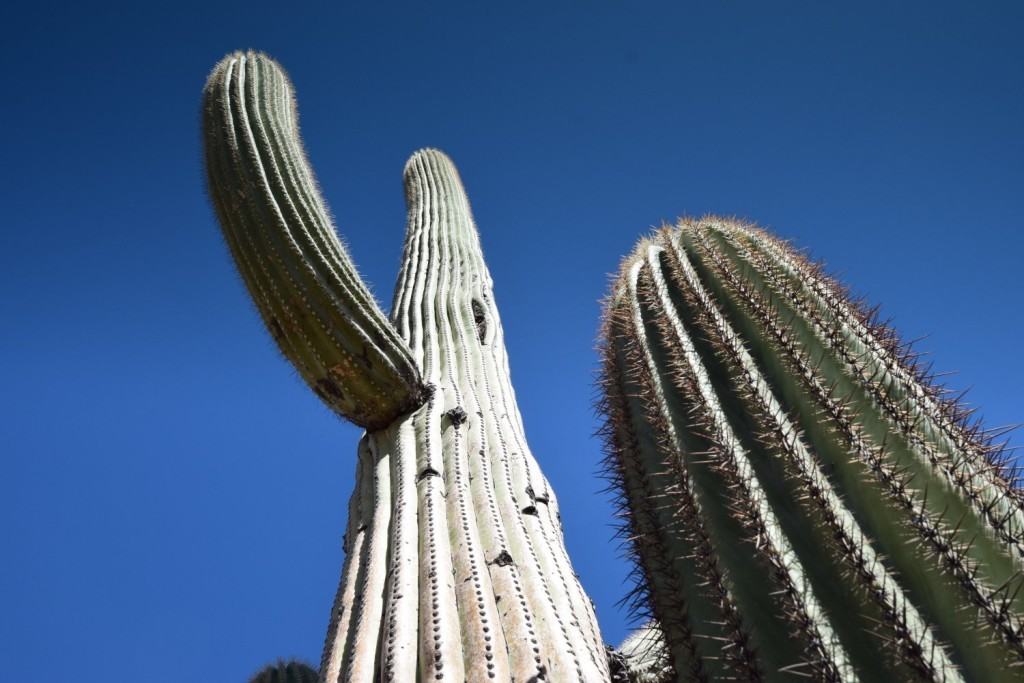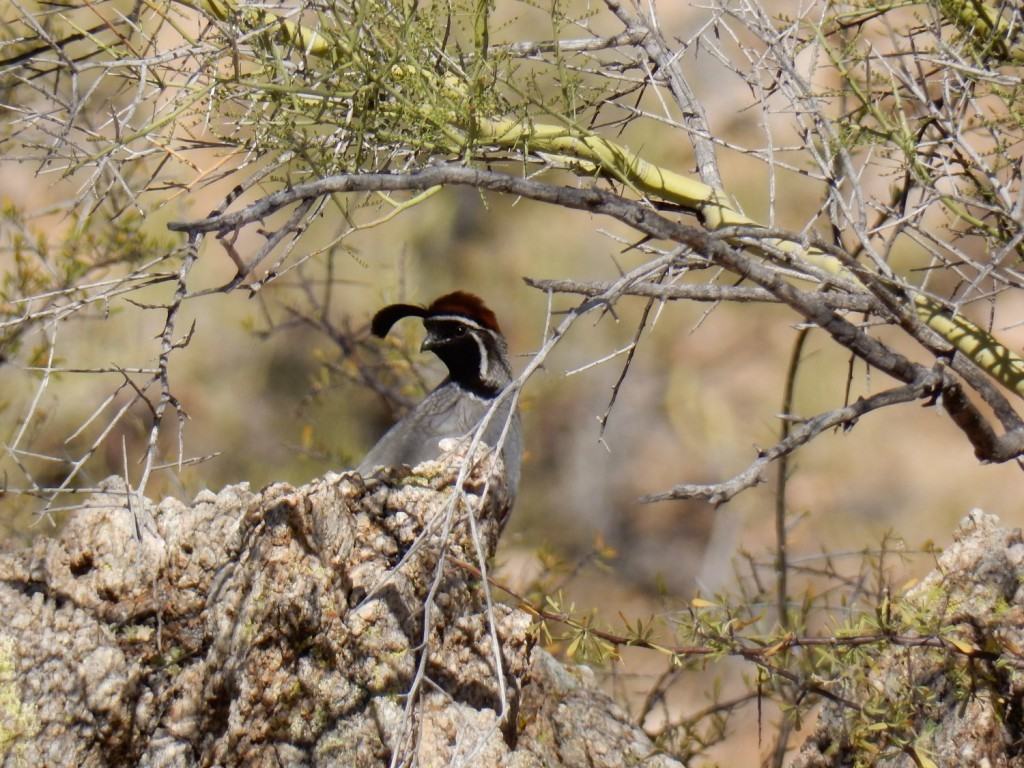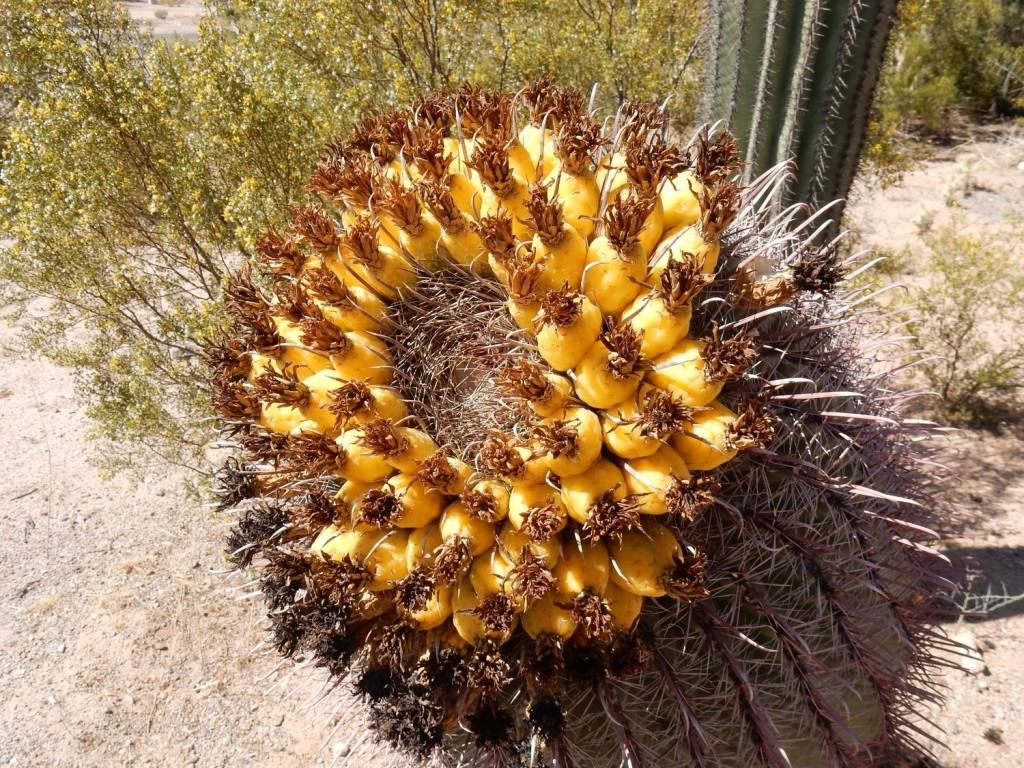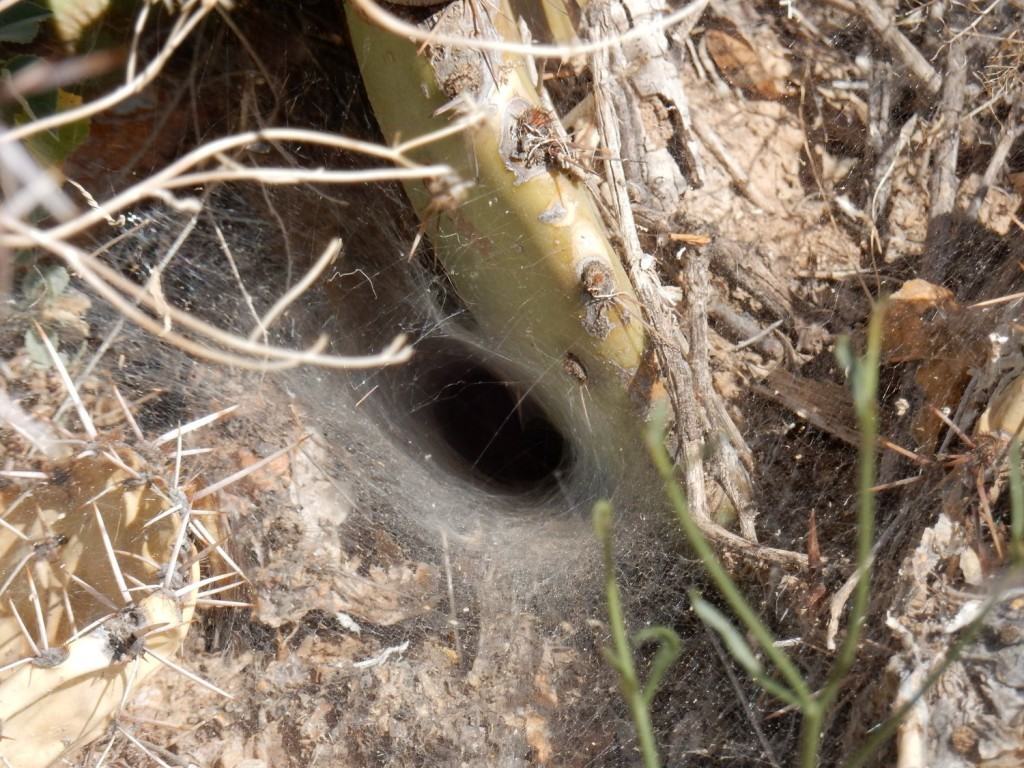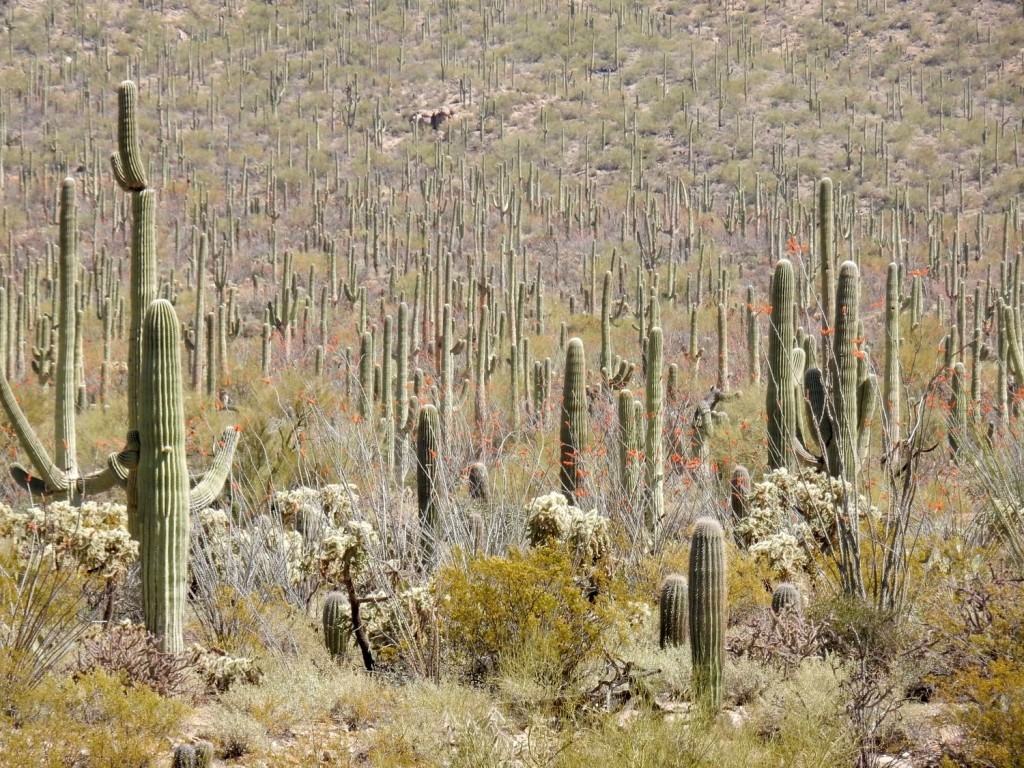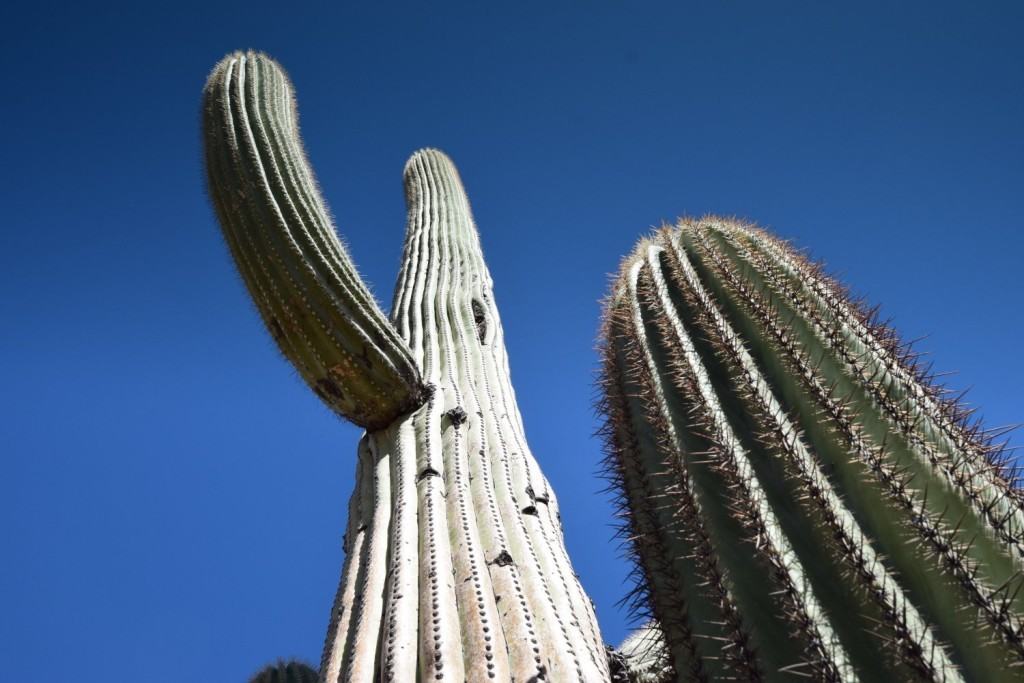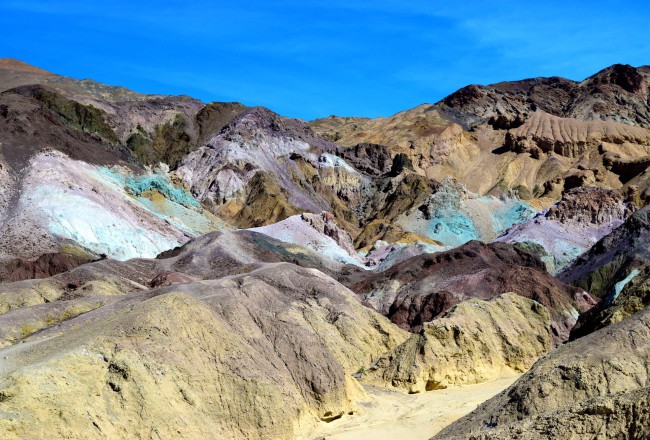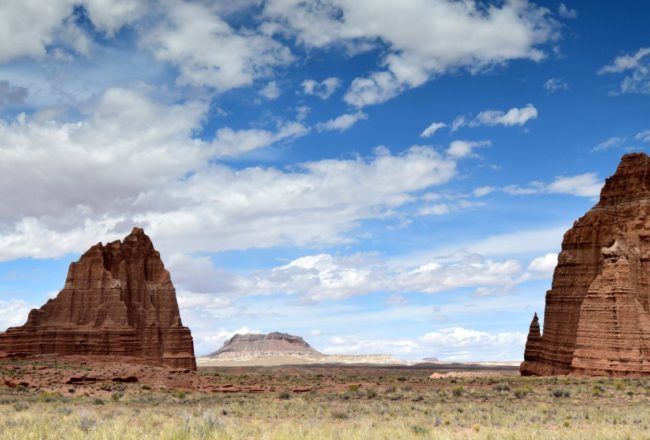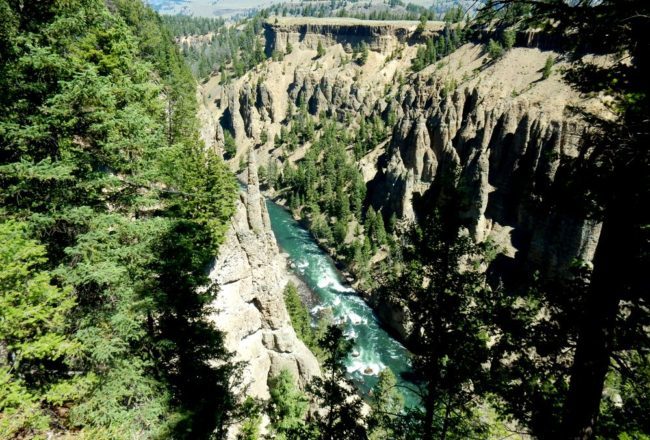We took a trip to Saguaro National Park late in the morning and the temperature was already reaching a high of 86°F. This is unusually warm weather (Normal is 70°F) for the northernmost limit of the Sonoran Desert, of which the National Park protects. This park is rather unusual in that it is separated in two by Tucson city, which is at the heart of the Sonoran Desert. The Tucson Mountain District makes up the Saguaro National Park on the west, while the Rincon Mountain District is to the east. Together both halves make up 70,000 acres of park land and are separated by 30 miles. While both are very similar in habitat and wildlife, the west features a stand of saguaro cactus creating a breathtaking forest of cacti, whereas the east hosts a magnificent environment for bears, cougars and the ever elusive coati — a kind of strange lemur-looking raccoon.
At temperatures reaching near 90°F, I felt it wasn’t safe to venture too far on the trails without a good supply of water. Plus with rattler snakes waking up from their winter slumber and me with only sandals on my feet, long 3 hour hikes were ruled out. For this journey we, took a short trip to the Tucson Mountain District along the scenic Bajada Loop Drive. Its an unpaved road not requiring 4×4 wheel drive nor high clearance. Along the the loop are trail heads leading to some stunning views. Valley View Overlook, is the first trail you’ll encounter and its a blissfully easy 0.8 mile walk to a view from a ridge where you can see the Avra Valley below. The second trail on the drive loop is the Hugh Norris Trail, a hard and strenuous trail only meant for the fittest and well equipped of hikers and is 10 miles and takes up to six hours to complete.
There are two off-shoot roads we took from the drive loop: Golden Gate Road and Signal Hill. On Golden Gate Road, we stopped at a site curiously called Ez-Kim-in-Zin. This place was named after an Aravaipa Apache chief Ezkiminzin, who lost all of his family in the Fort Grant Massacre on April 28, 1871 in Aravaipa Canyon. It has a great view of the mountains to the South including Wasson and Amole peak. Its also near the Encinas Trail Head to the north and the pack-horse allowed trail of Sendero-Esperanza to the south. Here we spotted wild quail roaming in between brush and rock. And a young gila woodpecker making her calls atop a saguaro cactus. At Signal Hill, there is a short climb that leads you to a place with dozens of petroglyphs more than 800 years old.
At the Red Hills Visitor center there is this beautiful nature life-size diorama showing the habitat and wildlife found within the Tucson Mountain District of Saguaro National Park. The also show an orientation program offering a Native American perspective on the saguaro cactus at regular intervals. Behind the center is a nice short interpretive trail with nice specimens of the local flora.
Next stop is Saguaro National Park East!
